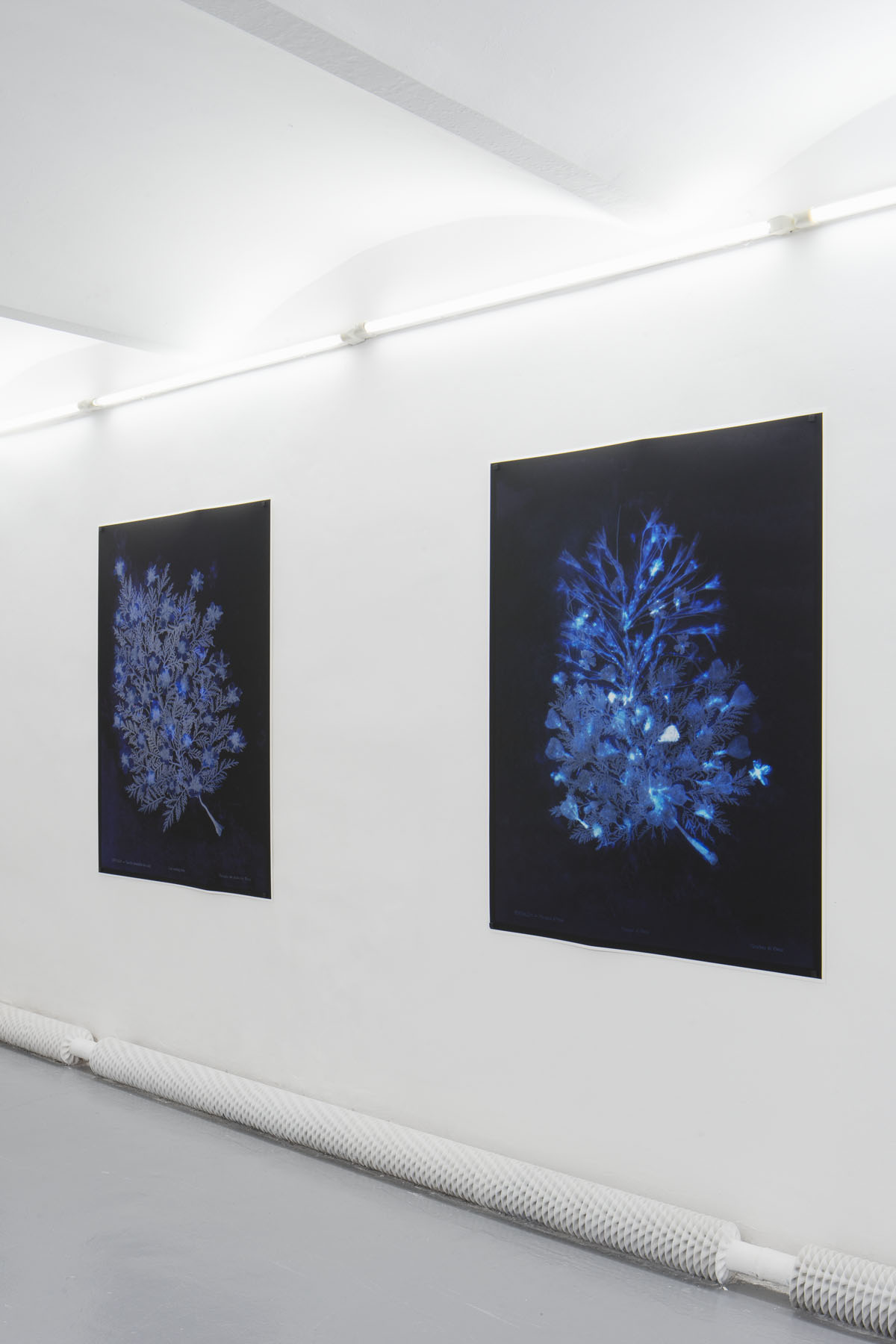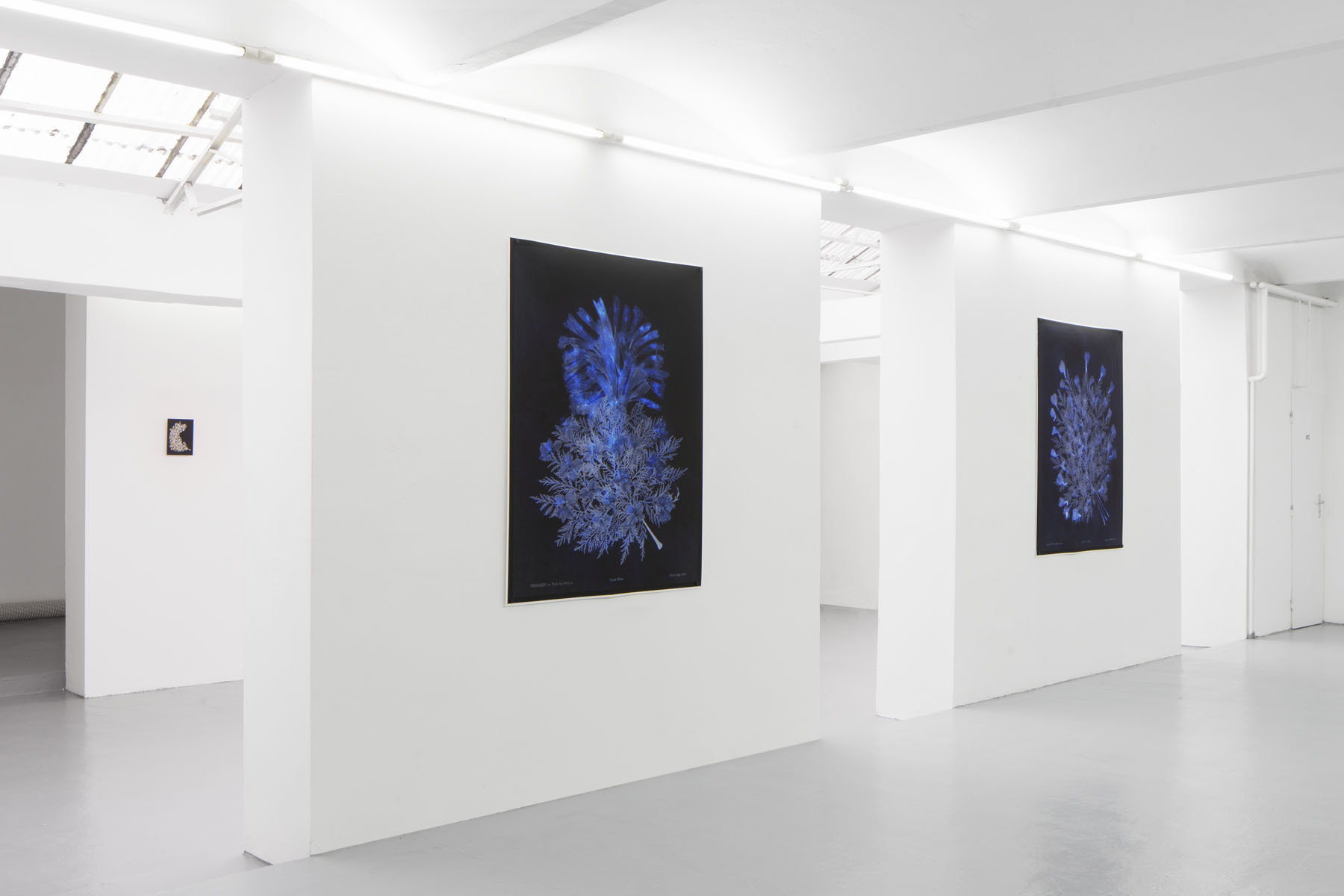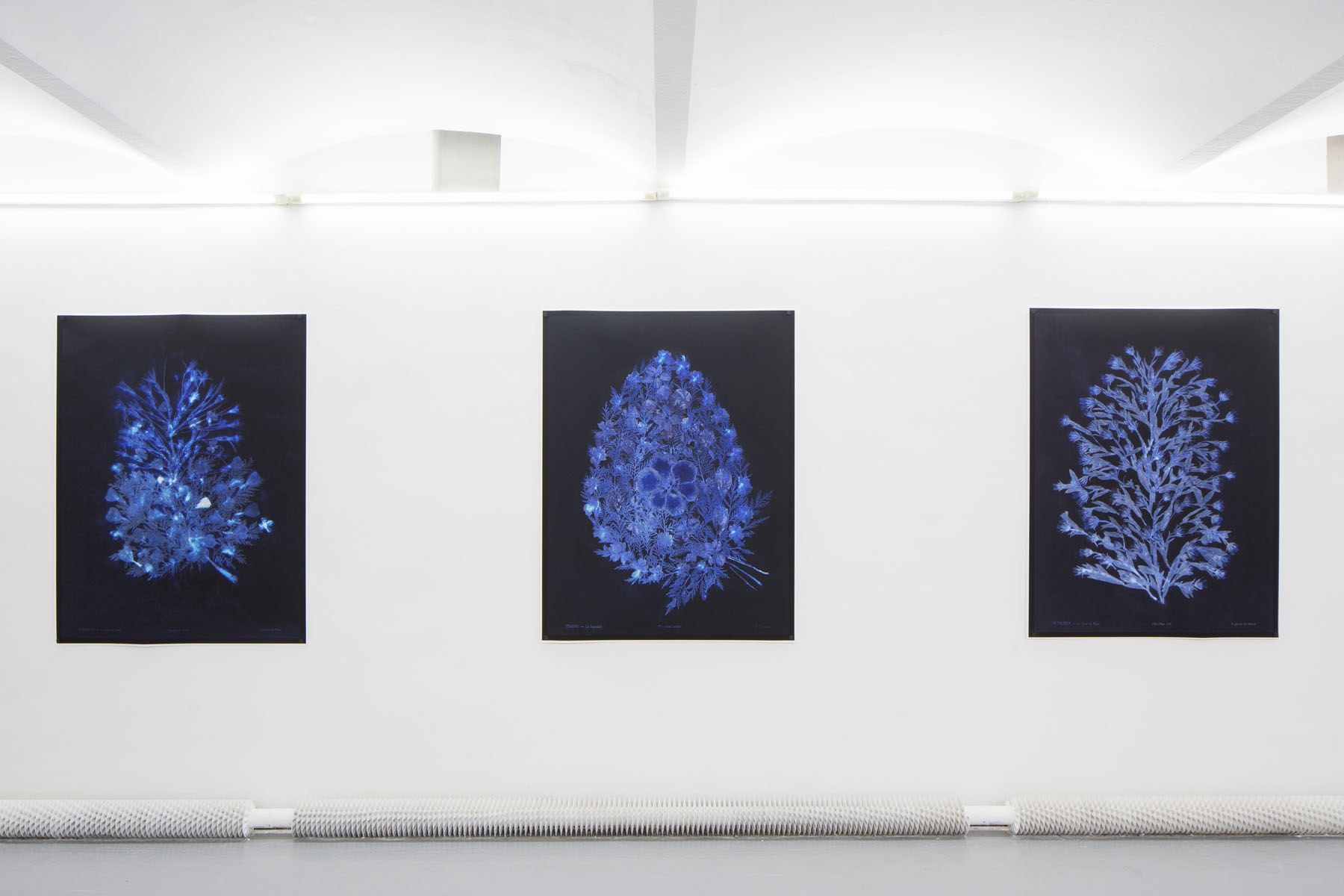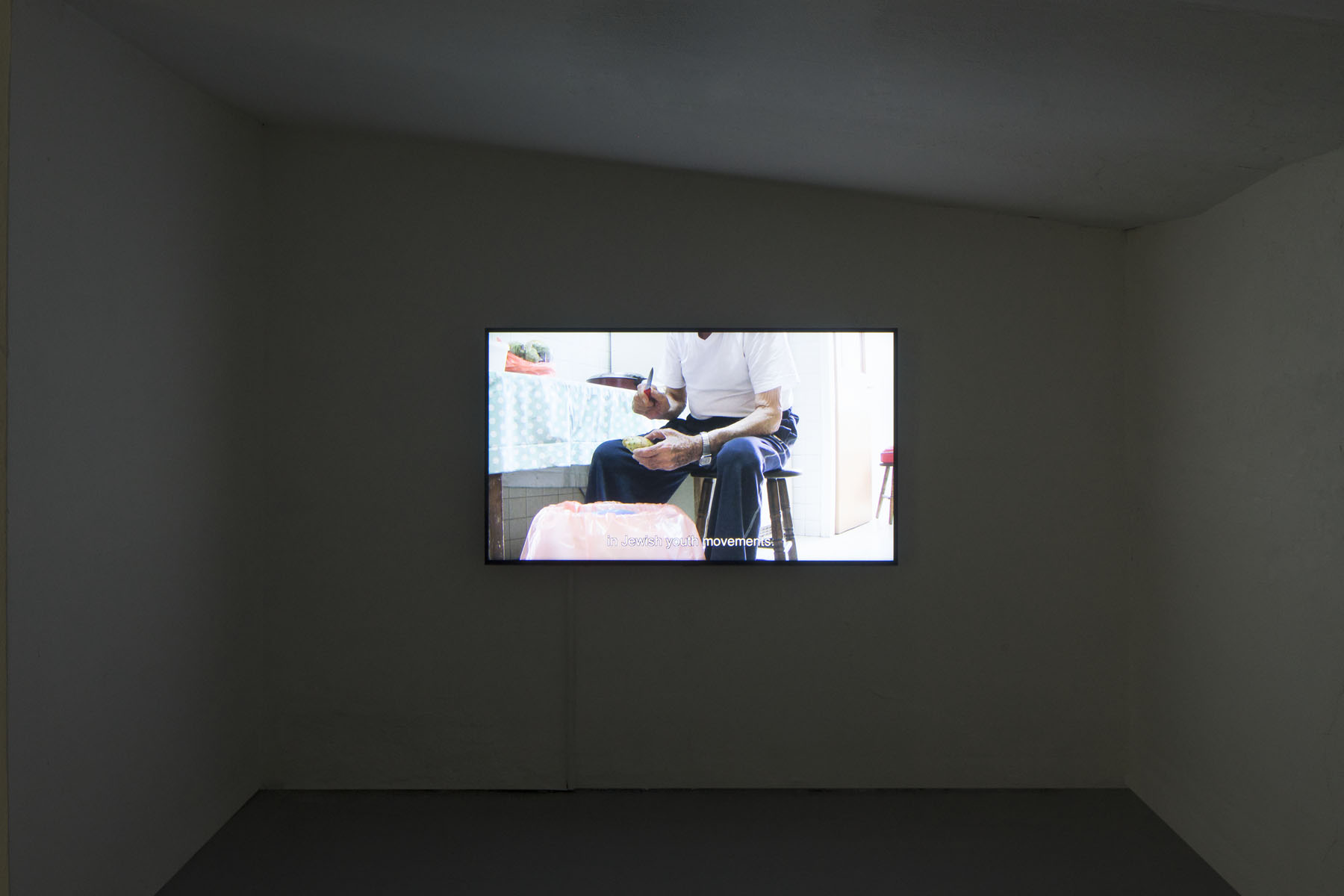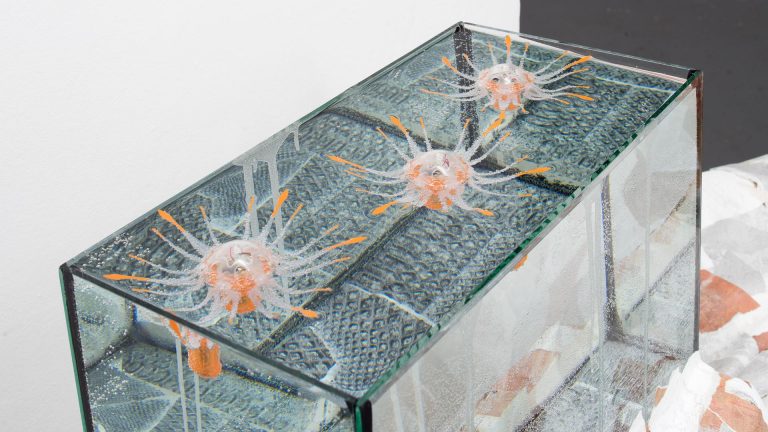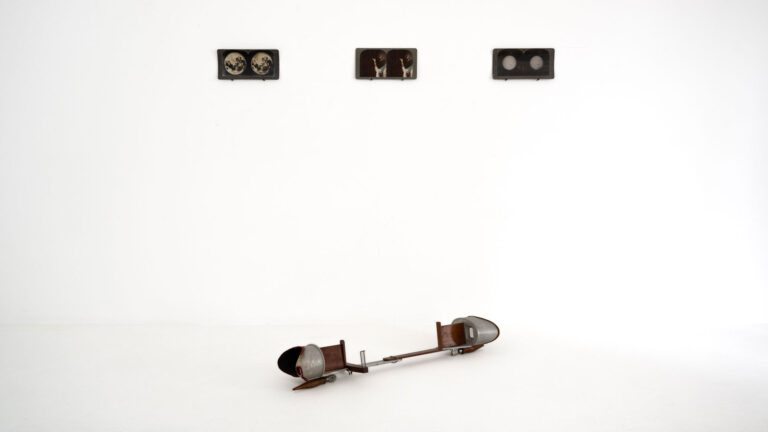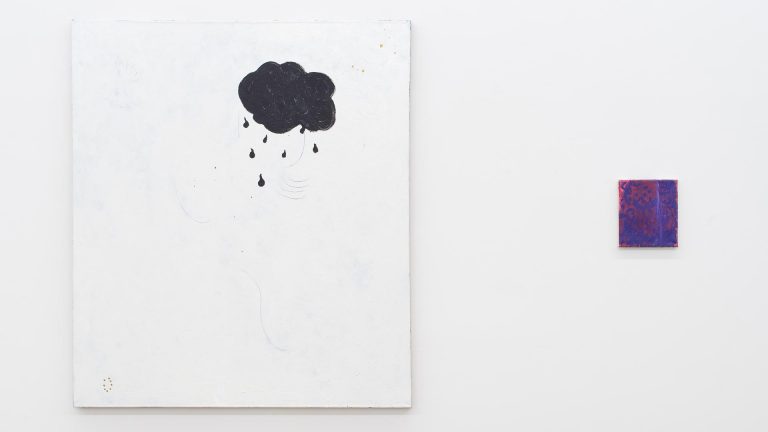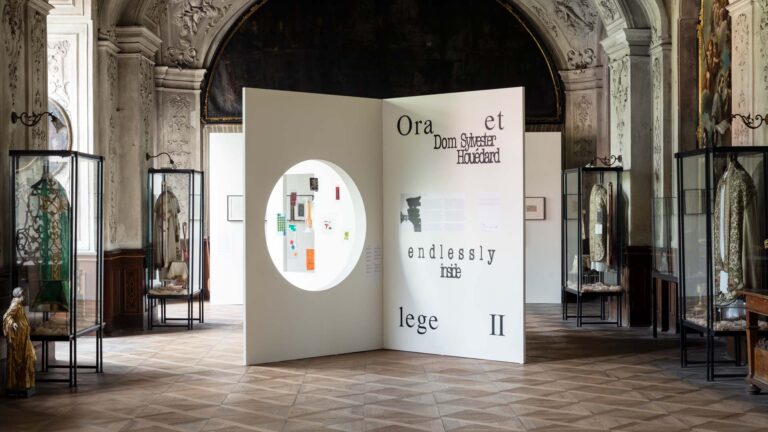Artist: Dor Guez
Exhibition title: Vera Icona
Curated by: Sara Reisman, Jaro Varga
Venue: Futura, Prague, The Czech Republic
Date: February 25 – May 31, 2020
Situated between historical archives, contemporary photography, and video, Dor Guez’s exhibition Vera Icona brings together the Jerusalem born artist’s most recent photographic series Lilies of the Field (2019) with a trilogy of three experimental, narrative videos produced between 2009 and 2011, that collectively reflect on the relationship between language and displacement, and nature’s entanglement with perceptions of home and identity.
Lilies of the Field is comprised of mysteriously luminous pressed floral and plant arrangements discovered by Guez in his research at the American Colony archives in Jerusalem. The flowers highlighted in the project represent a diversity of flora indigenous to the holy land, and the areas surrounding the Old City. Popular souvenirs for tourists and missionaries making religious pilgrimages, the pressed flowers serve to document different forms of devotional labor, from the work of the artisans who pressed the flowers, to those who made the journey and acquired the flower arrangements as keepsakes.
Formed in the aftermath of the Great Chicago Fire in 1871, the American Colony’s initial pilgrimage to Jerusalem precedes waves of Jewish immigration to Palestine leading up to 1948, when the state of Israel was established. A mission of Christian Americans who left Chicago for Jerusalem in 1881, members of the American Colony became active in charitable work to help local communities, setting up orphanages, soup kitchens, and medical resources for locals who suffered before and during the World Wars. Their work was not intended to benefit members of any one religion, a reminder of Jerusalem’s spiritual import across affiliations.
Building on his work with the lilies, Guez has recently staged performative lectures within the archive of the American Colony where he presented his research findings that draw on the histories of Zionism, the Armenian quarter in Jerusalem, the American Colony itself, and Guez’s Christian Palestinian Archive. Initiated in 2006 upon the artist’s discovery of a suitcase full of family photographs under his grandparents’ bed, the Christian Palestinian Archive is a platform he established to document a minority within a minority, the Christian-Palestinian diaspora. Within Israel/Palestine, approximately 20% of the population that is not Jewish is Palestinian with Israeli citizenship, 8% of which is Christian – like the artist’s family. In organizing this archival project, Guez maintains a digital record of thousands of images submitted by professional and amateur photographers, material that is both historical and aesthetic, intended for use and circulation well beyond art audiences. Unique to his approach is that the archive is made up of scanned images, rather than the actual photographs. Once scanned, the originals are returned, so that Christian Palestinian visual culture can remain with its rightful owners. As an archivist, Guez’s intention is to fill in gaps, but as an artist, his work leaves more open to speculation.
Though not officially part of the Christian Palestinian Archive, the trilogy of videos featured in Vera Icona – titled (Sa)Mira (2009), Watermelons under the bed (2010), and Sabir (2011) – depict distinct portraits of three of Guez’s relatives on the Palestinian side of his family. Each video is staged as minimally edited, experimental narratives that tell stories of the protagonists’ everyday existence under occupation. Capturing the layered, and, at times, conflictual aspects of identity, the three videos underscore the historical trauma that each of the three family members has absorbed subtly and slowly. The use of language – a mixture of Arabic and Hebrew – reveals just how intertwined and embedded the two cultures are in the lives of the artist’s grandfather, grandmother, and cousin, whose perspectives span three generations.
The title of the exhibition Vera Icona suggests multiple meanings in different languages. Associated with the term ‘verity,’ which in English means true, in Spanish verá is the future tense of ‘to see’; vera also means ‘edge’, ‘side’, and ‘shore’. In Latin, Icona translates to ‘image’ or ‘figure.’ Taken together, Vera Icona might allude to what can be seen, or imagined, beyond the image that is before us. Each of Guez’s videos require reading between the lines, conceptually, to understand the implications of each of his protagonist’s experiences. Between the temporal ambiguity of Lilies of the Field and the stories of hybridity and marginalization expressed in Guez’s videos, Vera Icona is a subtle inquiry into what we know to be true, across generations and borders.
– Sara Reisman

